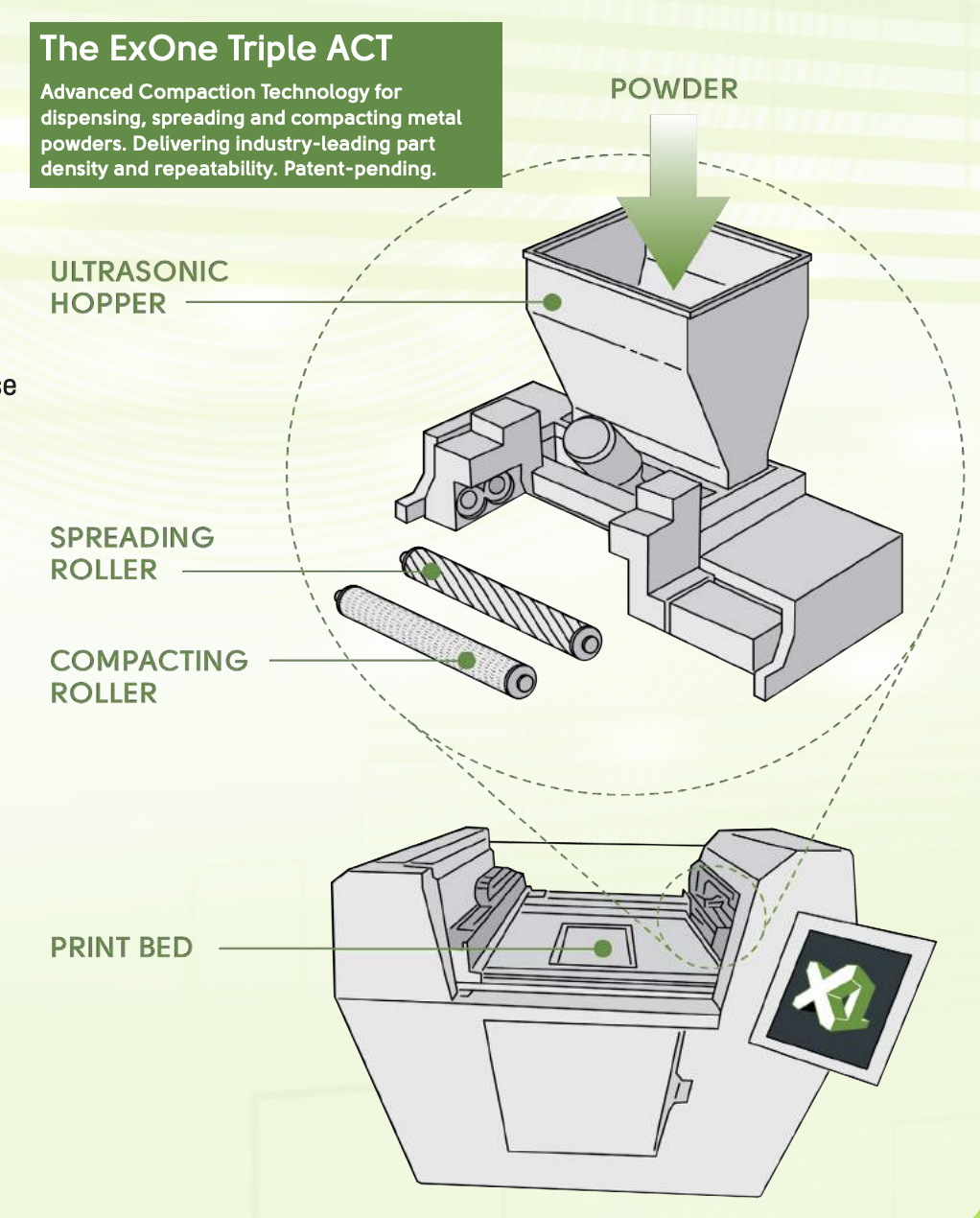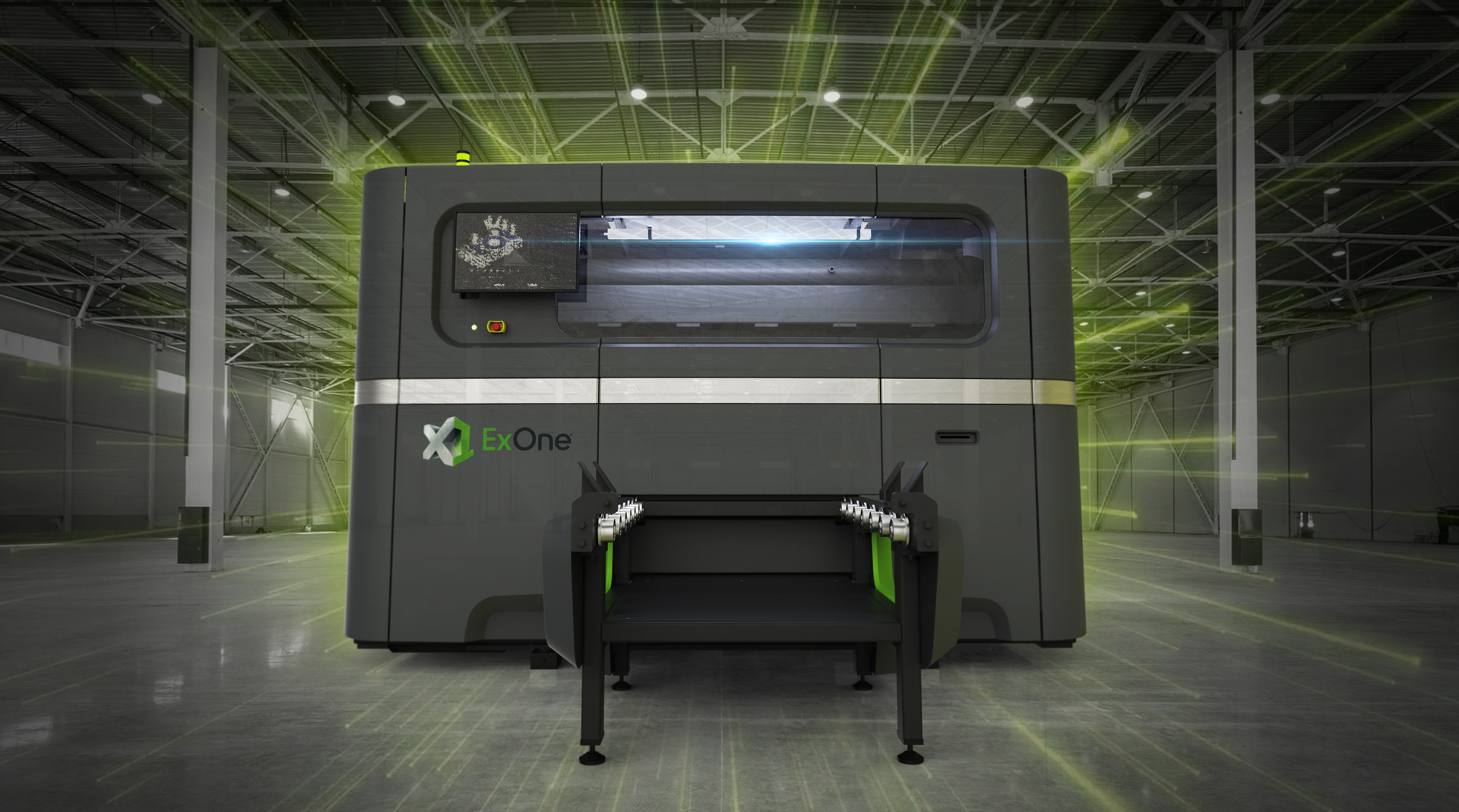The ExOne Company, manufacturer of sand and metal 3D printers for binder jetting technology, has announced that they will be partnering with Xometry—known for its custom manufacturing marketplace in the US. Centering around metal additive manufacturing processes, ExOne will be the sole provider for binder jetting in this new partnership.
Xometry customers will be able to benefit from ExOne’s 20 years in 3D printing and the refinements it has made with “triple advanced compaction technology” and ultrasonic dispensing (illustrated below)—allowing for better accuracy and performance in parts. Some of the greatest benefits in 3D printing are offered with binder jetting from ExOne, including affordability and speed in production as one roller evenly spreads powder, and another compacts it for the proper density. With a bonding agent deposited onto a thin layer of the powder, the process is repeated over and over until the 3D printed structure is made.
ExOne can print over 20 materials currently, including the following:
- 316L stainless steel
- 17-4PH stainless steel
- Inconel 718
- M2 tool steel
“ExOne is proud to offer our metal 3D printing services to Xometry customers,” said John Hartner, ExOne’s CEO. “Our industrial binder jet machines can truly take products from prototyping all the way to final production with a single process that is fast, affordable and sustainable.”
This type of partnership marks the accelerated trend not only in the use of metal but in evolving past rapid prototyping to using AM processes for functional parts in many different industrial applications. Metal binder jetting continues to grow in popularity too due to the ability to make strong but lightweight parts like metal casting molds and cores, and innovative tooling solutions from a variety of materials; meanwhile Xometry is able to offer customizations through a vast network which relies not only on 3D printing technology, but also traditional processes like CNC machining, injection molding, die casting, and more. Currently they customize and produce parts for companies like BMW, Dell, NASA, and GE.
“We’re excited to offer binder jetting to expand the range of services our customers can get from Xometry’s new Digital RFQ Marketplace,” said Randy Altschuler, Xometry’s CEO. “ExOne is a true innovator in additive manufacturing and we believe this partnership is a big win for our customers.”
ExOne has continued to show dropping revenues despite their international standing as a leader in binder jet 3D printing technology. Amidst employee layoffs, their second-quarter earnings report showed a year-on-year revenue decrease of 27%.
As was the case with businesses of all types and of all sizes this year, COVID-19 has wreaked havoc on finances. Employee furloughs and pay cuts have also been instituted in efforts to cut the ExOne budget, although the Pennsylvania-headquartered company expects revenues to be rising in the future as interest in 3D printing technology for the industrial front continues to accelerate.
Xometry’s financing rounds have been promising, however, with another $50MM raised last year—bringing overall funding to $113MM for the Maryland manufacturing startup. They plan to invest in further product development and global expansion, along with other “growth initiatives” with the substantial funds currently at their disposal.
[Source / Images: Xometry]
The post ExOne to Partner with Xometry to Offer Metal Binder Jetting appeared first on 3DPrint.com | The Voice of 3D Printing / Additive Manufacturing.






